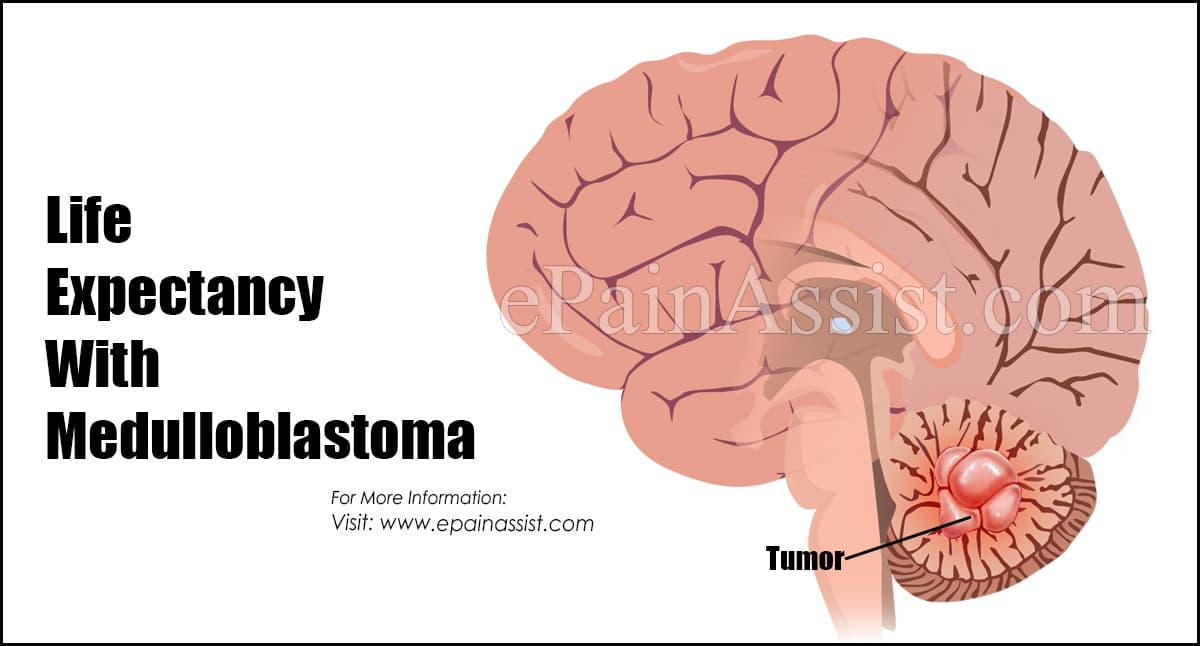Medulloblastoma is the most common tumor among Primitive Neuroectodermal Tumors (PNET). Although the life expectancy depends upon various factors, but if the patient is able to survive five years from the treatment, the disease has a favorable prognosis.

Life Expectancy With Medulloblastoma
Life expectancy is defined as the number of years a person is going to live with the disease. Life expectancy is the measure of the age of the person till the person lives after the diagnosis of the disease. Medulloblastoma is a serious condition and it debilitates the life expectancy as it affects various parts of the brain specifically cerebellum.
Further, it is a progressive condition and if not managed at the early stage may lead to fatal consequences. Studies were done on the patients who had survived five years after undergoing therapy such as chemotherapy or radiotherapy.
The overall life expectancy of medulloblastoma patients at 15-year and 30-year was found to be approximately 83% and 68% respectively. Further, the cancer specific survival of these patients is quite high as this percentage reach to approximately 85% and 76% respectively. Thus, it can be said that once a person survives for five years after therapeutic intervention in case of medulloblastoma, the long-term prognosis of such patients tends to be favorable.
Factors Affecting Life Expectancy
Medulloblastoma is divided in to various stages and as the stage of the disease increases, the risk increases. The life expectancy of the patient suffering from medulloblastoma depends upon the variety of factors. Further, the stage of the disease is required to be analyzed in order to determine the appropriate treatment strategy.
More advanced the disease, more aggressive treatment is required. Following are factors that affect the survival of the patient:
- Age Of The Patient: If the age of the patient suffering from medulloblastoma, is below three years, chances of survival of the patient is less as compared to the baby having age more than three years.
- Tumor Remained After Surgery: If the amount of tumor which is remained in the brain after surgery is greater than 1.5 cm2, the patient is at high risk stage and may have poor prognosis.
- Stage Of The Disease: The stage, at which the disease is identified, also plays an important role in prognosis of the disease. The patient may be at higher risk if the disease is metastasized to other parts of the brain or spread to pine or cerebrospinal fluid. Further, in rare conditions, medulloblastoma may metastasize outside the brain in organs such as bone and chest, which is the complex stage of the disease and aggressive therapy is required.
- Response Towards Treatment: Some cases of medulloblastoma does not respond to treatment as this is more complex disease as compared to neuroblastoma, which is a disease of peripheral nervous system. As medulloblastoma is concentrated mainly in brain, the drugs have to cross the blood brain barrier thereby reducing the potency of the drugs. Thus, the patients with poor response towards treatment, has poor prognosis.
Medulloblastoma
Medulloblastoma is the most common disease of all the disease classified under Primitive Neuroectodermal Tumors (PNET). Medulloblastoma is the disease characterized by the presence of tumor inside the brain. Generally, the tumor remains confined within the brain and can metastasize to other parts of the brain, cerebrospinal fluid and spine. However, in rare circumstances the tumor may spread to organs outside the brain such as chest and bones. Most of the patients have poor response towards the treatment of medulloblastoma and thus they generally have poor prognosis. Medulloblastoma carries the features of the cells from which it is derived and abnormally activates Hedgehog or Wnt signaling pathways. The part of the brain that is primarily affected is the cerebellum. Due to the degradation of cerebellum, the patient may experience the symptoms such as poor motor activity, difficulty or inability in walking and cognitive dysfunction. As the tumor compresses the tissues of the brain, the patient may experience moderate to severe headache.
Conclusion
The overall survival of the patient who has survived 5 years from the point of therapy is 83% and 68% for 15-year and 30-year respectively.
Also Read:
